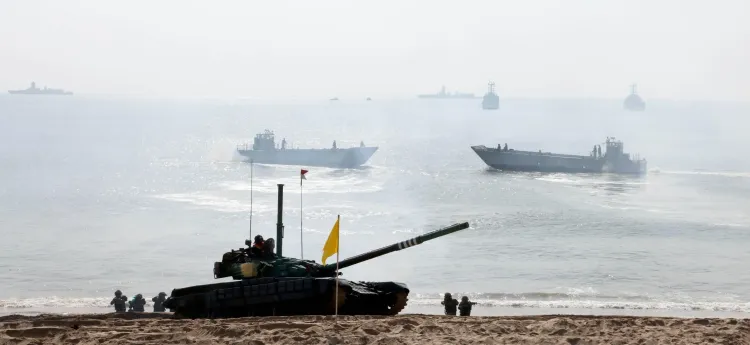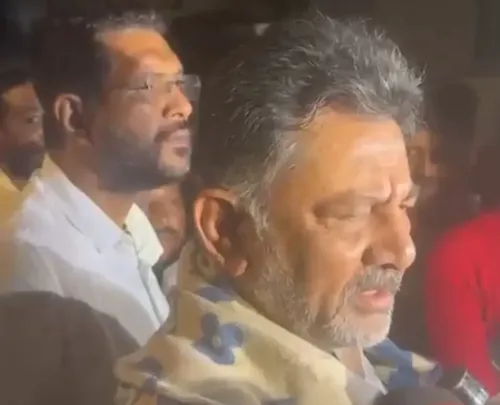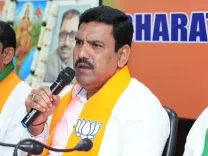How Does Exercise Trishul Showcase India's Future Military Preparedness?

Synopsis
Key Takeaways
- Trishul exercise showcases India's multi-domain operational capability.
- Involved over 30,000 troops and advanced weapon systems.
- Conducted in diverse terrains, enhancing strategic readiness.
- Introduced new military formations like Rudra brigades.
- Demonstrated India's commitment to national security and regional stability.
New Delhi, Nov 20 (NationPress) The Indian military's tri-services exercise Trishul has raised alarms in Pakistan, highlighting India's extensive range of strike capabilities—from surgical strikes to combined arms operations—that can be executed swiftly if necessary. A report released on Thursday indicated that the Indian Army has embraced new operational strategies and systems that could be employed against Pakistan in any forthcoming conflict.
According to a report from 'The Diplomat', while the Indian military has conducted numerous large-scale tri-service drills in the past, the latest Trishul exercise was notably distinctive. Spanning from October 30 to November 13, it was characterized by its timing, integrated coordination, scale, and the evaluation of new operational tactics and cutting-edge weaponry. The primary objective was to boost collaboration among the tri-forces command, allowing India’s military to perform multi-domain operations with greater efficiency.
Trishul was conceptualized as an overarching exercise with diverse objectives, featuring various subdrills like BrahmaShira, Akhand Prahar, Maru Jwala, and AMPHEX-25. Military operations took place in the desert and marshy landscapes of Rajasthan and Gujarat, while naval and amphibious activities were executed along the Northern Arabian Sea coast.
The report from the prominent Asia-Pacific current affairs publication noted that Trishul, conducted over two weeks, saw the active involvement of over 30,000 personnel from the Indian Army, 25 warships and submarines from the Indian Navy, 40 aircraft from the Indian Air Force (IAF), and members from paramilitary forces—making it the largest integrated military display since the ceasefire with Pakistan.
It emphasized that Trishul was aimed at evaluating the effectiveness and performance of the Indian Army’s new formations, such as Rudra brigades, Bhairav battalions, and Ashini platoons, ensuring that the ongoing restructuring of the army is progressing appropriately.
The exercise illustrated that India remains committed to large-scale integrated operations, as evidenced by the testing of the new Rudra combined arms brigades. The maneuvers conducted during the exercise reflected India’s recently adopted Dynamic Response Strategy (DRS), which empowers political leaders to choose from a variety of available strike options based on specific mission needs.









